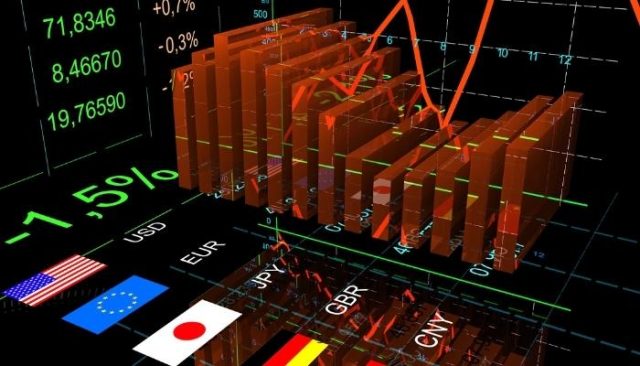Imagine a vast, global marketplace where currencies from every corner of the world are traded at lightning speed. This is the foreign exchange market, also known as Forex. Exchange rates are the fundamental building blocks of Forex, dictating the value of one currency relative to another. They are the heartbeat of international trade, finance, and travel, influencing everything from the prices of imported goods to the cost of overseas vacations. In this comprehensive guide, we will delve into the intriguing world of forex exchange rates, exploring their history, mechanisms, and impact on our global economy.

Image: www.financestrategists.com
The Genesis of Exchange Rates
The concept of currency exchange has existed since the dawn of trade between civilizations. When two nations desired to exchange goods, they faced the challenge of valuing their currencies against each other. Early exchange rates were often determined by the weight of precious metals, such as gold and silver, used to mint coins. As trade flourished and economies grew more complex, the need for a standardized system of exchange rates became apparent.
Enter the Gold Standard
In the late 19th century, the gold standard emerged as the dominant system for setting exchange rates. Under this system, the value of a currency was directly tied to the amount of gold held by the issuing country. This meant that countries could maintain fixed exchange rates by adjusting their gold reserves accordingly. The gold standard ensured stability in exchange rates, facilitating international trade and investment.
The Bretton Woods System
After the turmoil of World War II, the Bretton Woods System was established in 1944 to create a new global monetary order. This system reinforced the gold standard but also introduced a new concept: the peg. Countries were required to peg their currencies to the US dollar, which in turn was pegged to gold. This system aimed to prevent exchange rate fluctuations that could disrupt international trade.

Image: www.dumblittleman.com
The Floating Exchange Rate Era
In the 1970s, the gold standard and the Bretton Woods System began to crumble under the weight of inflation and economic imbalances. This led to the adoption of floating exchange rates, where currencies are determined by supply and demand in the foreign exchange market. Floating exchange rates introduce flexibility into the system, allowing currencies to adjust in response to economic conditions and market forces.
The Mechanics of Exchange Rate Determination
In the foreign exchange market, exchange rates are primarily determined by the forces of supply and demand. When there is a high demand for a particular currency, its value rises (appreciates) against other currencies. Conversely, when there is a low demand for a currency, its value falls (depreciates). Several factors can influence supply and demand, including economic growth, inflation, interest rates, political stability, and market sentiment.
Types of Exchange Rates
There are two main types of exchange rates: spot rates and forward rates. Spot rates reflect the current value of a currency pair in the foreign exchange market. Forward rates are used to lock in a future exchange rate for a specified date and time. This is particularly useful for businesses and investors who need to manage their currency risk exposure.
Impact on International Trade
Exchange rates play a crucial role in international trade. A favorable exchange rate can make exports cheaper and imports more expensive, boosting exports and dampening imports. Conversely, an unfavorable exchange rate can discourage exports and encourage imports. Governments often use exchange rates as a tool to promote economic growth and balance trade deficits.
Influence on Tourism and Travel
Exchange rates also significantly impact tourism and travel. When the exchange rate is favorable, tourists can purchase more goods and services in foreign countries. Conversely, when the exchange rate is unfavorable, travel becomes more expensive, potentially deterring tourists.
Implications for Multinational Corporations
Multinational corporations with operations in multiple countries face challenges related to exchange rate fluctuations. For example, when the exchange rate of a subsidiary’s host country depreciates, the subsidiary may generate lower revenues in terms of the parent company’s currency. Forward contracts and other hedging strategies are often used by multinational corporations to manage exchange rate risk.
Recent Trends and Developments
The world of foreign exchange is constantly evolving, with new trends and developments emerging all the time. The increasing use of electronic trading platforms has made Forex more accessible to individual investors and businesses. Additionally, central banks have adopted various monetary policy measures to influence exchange rates and manage inflation.
Introduction Of Forex Exchange Rate
Unveiling the Potential of Forex






